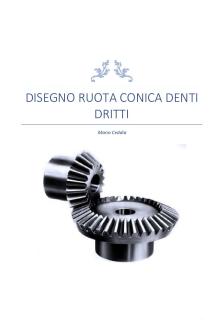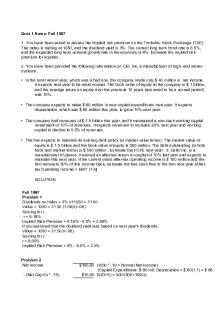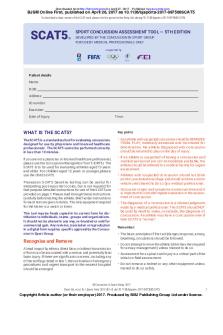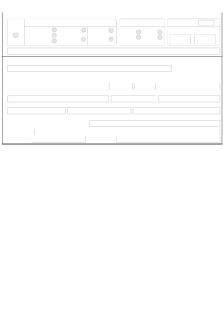Valuation Damodaran MCQ merged PDF

| Title | Valuation Damodaran MCQ merged |
|---|---|
| Course | Valuation Methods |
| Institution | American University of Beirut |
| Pages | 72 |
| File Size | 1.6 MB |
| File Type | |
| Total Views | 628 |
Summary
**Session 1: Post Class tests ** Valuation is a skill set that is necessary only for a. Investment bankers who may want to assess the value of acquisitions or &nb...
Description
Session'1:'Post'Class'tests' 1. Valuation+is+a+skill+set+that+is+necessary+only+for+ a. Investment+bankers+who+may+want+to+assess+the+value+of+acquisitions+ or+IPOs+ b. Management+consultants+who+want+to+provide+good+corporate+finance+ advice+ c. CFOs+who+want+to+understand+what+drives+the+value+of+their+ businesses+ d. Investors+who+want+to+find+cheap+and+expensive+stocks+ e. Entrepreneurs+who+have+to+negotiate+with+buyers+and+VCs+about+the+ values+of+their+businesses+ f. All+of+the+above+ 2. When+you+value+assets,+you+are+implicitly+assuming+that++ a. The+market+is+always+right+ b. The+market+is+always+wrong+ c. The+market+is+sometimes+wrong,+but+that+it+corrects+itself+eventually+ d. The+market+is+sometimes+wrong,+and+that+it+does+not+correct+itself+ eventually+ e. None+of+the+above+ 3. The+biggest+enemy+of+good+valuation+is+bias.+To+minimize+bias+in+valuation,+ you+should+ a. Read/review+what+other+people+think+about+the+value+of+a+company+ b. Meet+with+the+management+of+the+company+ c. Look+at+the+market+price+ d. Get+paid+more+to+do+the+valuation+ e. None+of+the+above+ 4. You+are+valuing+two+companies.+Company+A+is+a+mature+company,+with+a+long+ and+stable+history.+Company+B+is+a+young,+startSup+with+substantial+ uncertainty+about+the+future+and+little+history.+Which+of+the+following+ statements+would+you+subscribe+to?+ a. +I+will+be+able+to+value+Company+A+less+precisely+than+Company+B,+and+ there+will+be+a+bigger+payoff+to+valuing+Company+B.+ b. I+will+be+able+to+value+Company+A+more+precisely+than+Company+B,+and+ there+will+be+a+bigger+payoff+to+valuing+Company+A.+ c. I+will+be+able+to+value+Company+A+less+precisely+than+Company+B,+but+ there+will+be+a+bigger+payoff+to+valuing+Company+A.+ d. I+will+be+able+to+value+Company+A+more+precisely+than+Company+B,+but+ there+will+be+a+bigger+payoff+to+valuing+Company+B.+ 5. What+type+of+investor+will+get+the+biggest+payoff+from+using+intrinsic+valuation?+ a. An+investor+with+a+short+time+horizon+that+believes+that+markets+are+always+ wrong.+ b. An+investor+with+a+long+time+horizon+that+believes+that+markets+are+always+ wrong.+ c. An+investor+with+a+short+time+horizon+that+believes+that+markets+make+ mistakes+on+pricing+but+that+they+correct+them+over+time.+
d. An+investor+with+a+long+time+horizon+that+believes+that+markets+make+ mistakes+on+pricing+but+that+they+correct+them+over+time.+ e. An+investor+that+believes+that+markets+are+always+right.+ 6. Which+of+the+following+assets+is+best+suited+for+relative+valuation?+ a. An+untraded,+unique+asset+with+nothing+comparable+or+similar+to+it.+ b. A+traded,+unique+asset+with+nothing+comparable+or+similar+to+it.+ c. An+asset+that+is+similar+to+other+assets,+none+of+which+have+traded+prices.+ d. An+asset+that+is+similar+to+other+assets,+many+of+which+are+traded+at+regular+ intervals.+ e. None+of+the+above+ 7. One+argument+that+is+used+by+those+who+use+multiples/relative+valuation+is+that+ there+are+fewer+assumptions+in+relative+valuation+than+in+intrinsic+valuation.+Is+this+ true+or+false?+ a. True+ b. False+
c. Session'1:'Post'Class'tests'(Solutions)+ 1. f.+All+of+the+above.+Everybody+needs+to+have+a+grasp+of+valuation.+ 2. c.+The+market+is+sometimes+wrong,+but+that+it+corrects+itself+eventually.+You+need+ the+market+to+make+mistakes+for+your+valuation+to+have+a+chance,+but+you+need+ the+market+to+correct+its+mistakes,+if+you+want+to+make+money.+ 3. e.+None+of+the+above.+All+of+the+actions+will+only+add+to+the+bias.+ 4. d.+I+will+be+able+to+value+Company+A+more+precisely+than+Company+B,+but+there+ will+be+a+bigger+payoff+to+valuing+Company+B.+With+its+long+and+stable+history,+ you+should+be+able+to+value+company+A+more+precisely,+but+so+will+everyone+else.+ You+will+value+Company+B+less+precisely,+but+most+people+will+give+up.+Your+ payoff+will+be+greater+with+Company+B.+ 5. d.+An+investor+with+a+long+time+horizon+that+thinks+that+markets+are+wrong+at+ points+in+time+but+that+they+correct+themselves+over+time.++If+markets+are+always+ wrong,+you+will+not+make+any+money+on+your+intrinsic+valuation+and+you+need+a+ long+time+horizon+to+improve+your+odds+of+markets+correcting+themselves.+ 6. d.+An+asset+that+is+similar+to+other+assets,+many+of+which+are+traded.+You+need+ similar+assets+for+the+comparison+and+the+trading+for+the+prices+on+these+assets.+ 7. b.+False.+You+may+make+fewer+explicit+assumptions+but+you+ultimately+make+the+ remaining+assumptions+implicitly.+Put+differently,+the+number+of+assumption+ embedded+in+both+approaches+is+the+same,+but+you+may+make+judgments+on+ fewer+of+them.+ +
Session'2:'Post'Class'tests' 1. Which'of'the'following'assets'is'best'suited'for'intrinsic'valuation?' a. A'finite'life'asset'with'no'cash'flows'associated'with'it' b. An'infinite'life'asset'with'no'cash'flows'associated'with'it' c. An'asset'with'uncertain'cash'flows'over'any'life'period' d. An'asset'with'cash'flows'contingent'on'an'event'happening' e. None'of'the'above' 2. Which'of'the'following'approaches'can'be'used'to'estimate'he'risk'adjusted'value'of' an'asset'in'an'intrinsic'valuation'(more'than'one'answer'can'apply)?' a. Discounting'the'certainty'equivalent'cash'flows'at'a'risk'adjusted'discount' rate' b. Discounting'the'expected'cash'flows'at'a'risk'free'rate' c. Discounting'the'expected'cash'flows'at'a'riskEadjusted'discount'rate' d. Discounting'the'certainty'equivalent'cash'flows'at'a'risk'free'rate' 3. Which'of'the'following'would'you'do'if'you'were'valuing'the'equity'in'a'business?' a. Discount'cash'flows'before'debt'payments'at'the'cost'of'equity' b. Discount'cash'flows'after'debt'payments'at'the'cost'of'equity' c. 'Discount'cash'flows'before'debt'payments'at'the'cost'of'capital' d. Discount'cash'flows'after'debt'payments'at'the'cost'of'capital' 4. Which'of'the'following'would'you'do'if'you'were'valuing'the'entire'business?' a. Discount'cash'flows'before'debt'payments'at'the'cost'of'equity' b. Discount'cash'flows'after'debt'payments'at'the'cost'of'equity' c. 'Discount'cash'flows'before'debt'payments'at'the'cost'of'capital' d. Discount'cash'flows'after'debt'payments'at'the'cost'of'capital' 5. You'have'been'asked'to'value'the'chemical'division'of'a'multi'business' conglomerate'and'have'been'provided'with'the'cash'flows'for'the'division.'' What'discount'rate'would'you'use'to'discount'this'cash'flow?' !! Earnings!before!interest!and!taxes!(15!tax!rate)! 5!Reinvestment!in!chemical!business!! Cash!flow! a. The'cost'of'equity'of'the'company' b. The'cost'of'capital'of'the'company' c. The'cost'of'equity'for'the'chemical'business' d. The'cost'of'capital'for'the'chemical'business' e. None'of'the'above' ' '
'
Year!1! $100! $20! $80!
Year!2! $105! $22! $83!
Year!3! $110! $25! $85!
Session'2:'Post'Class'tests'(Solutions)' 1. c.'An'asset'with'uncertain'cash'flows'over'any'time'period.'You'cannot'do' intrinsic'valuation'on'nonEcash'flow'generating'assets'(collectibles,'paintings,' gold).'An'asset'with'contingent'cash'flows'is'best'valued'as'an'option.' 2. c.'&'d.'You'can'either'adjust'the'cash'flows'for'risk'or'the'discount'rate,'not'both.' 3. b.'Discount'cash'flows'after'debt'payments'at'the'cost'of'equity' 4. c.'Discount'cash'flows'before'debt'payments'at'the'cost'of'capital' 5. d.'The'cost'of'capital'for'the'chemical'business.'The'cash'flows'are'computed' using'operating'income'(rather'than'net'income)'and'have'no'debt'flows' (repayments'of'debt'or'new'debt'issues).'They'are'also'for'the'chemical'business.' '
Session'3:'Post'Class'tests' 1. In%valuation,%your%risk%free%has%to%be%a%long%term,%default9free%rate.%When%valuing% a%company%in%US%dollars,%we%often%use%the%109year%US%T.%bond%rate%as%the%risk%free% rate.%In%the%last%few%years,%there%have%been%questions%about%whether%the%US% treasury%is%really%default9free.%If%you%share%these%concerns,%which%of%the%following% will%you%do,%assuming%that%you%are%still%estimating%cash%flows%in%US%dollars?% a. Continue%to%use%it%the%109year%bond%rate%the%risk%free%rate%since%you%have% no%choice% b. Switch%to%using%the%US%treasury%bill%rate,%since%default%is%less%likely%in%the% short%term% c. Estimate%a%default%spread%for%the%US%government%and%reduce%the%treasury% bond%rate%by%that%spread% d. Use%the%rate%on%a%109year%Swiss%Government%bond,%denominated%in%Swiss% francs%(since%the%Swiss%government%has%no%default%risk)% e. None%of%the%above% 2. You%are%valuing%a%Spanish%company%in%Euros.%Which%of%the%following%would%you% use%as%your%risk%free%rate%in%your%valuation?% a. The%rate%on%Spanish%government%ten9year%euro%bond%(5%)% b. The%highest%of%the%109year,%euro%denominated%government%bond%rates% (9%).%% c. The%lowest%of%the%109year,%euro%denominated%government%bond%rates% (1.5%)% d. The%lowest%of%the%European%government%bond%rates,%which%is%the%Swiss% Government%bond%rate,%denominated%in%Swiss%francs%(0.75%)% e. None%of%the%above% 3. You%are%valuing%a%Peruvian%company%in%US%dollars.%The%Peruvian%government%has% a%CDS%(Credit%Default%Swap)%that%is%trading%at%1%.%Which%riskfree%rate%would%you% use%in%your%valuation?% a. The%rate%on%a%Peruvian%109year%Sol%denominated%bond%(6%)% b. The%rate%on%a%Peruvian%109year%US%$%denominated%bond%(3.5%)% c. The%rate%on%a%Peruvian%109year%Sol%denominated%bond%minus%CDS%spread% d. The%rate%on%a%109year%US%treasury%bond%(2%)% e. None%of%the%above% 4. What%would%you%use%as%your%risk%free%rate%if%you%were%valuing%a%Peruvian% company%in%Peruvian%Sol?%(You%can%still%assume%that%the%Peruvian%sovereign%CDS% is%trading%at%1%.)% a. The%rate%on%a%Peruvian%109year%Sol%denominated%bond%(6%)% b. The%rate%on%a%Peruvian%109year%US%$%denominated%bond%(3.5%)% c. The%rate%on%a%Peruvian%109year%Sol%denominated%bond%minus%the% Peruvian%CDS%spread%(6%91%%%=5%)% d. The%rate%on%a%109year%US%treasury%bond%(2%)% e. None%of%the%above' %
Session'3:'Post'class'test'solutions' 1. c.''Estimate'a'default'spread'for'the'US'government'and'reduce'the'T.'bond' rate'by'that'spread.%'You%could%obtain%the%spread%for%the%US%sovereign%CDS%and% net%it%out%from%the%US%treasury%bond%rate.%You%cannot%use%as%short%term%rate%or%a% rate%from%a%bond%denominated%in%a%different%currency.% 2. c.'The'lowest'of'the'10Byear,'euro'denominated'government'bond'rates' (probably'ECB'or'German'10Byear).'The%Spanish%109year%bond%rate%is%not%risk% free%and%the%Swiss%government%bond%is%in%a%different%currency.% 3. d.'The'rate'on'a'US'T.Bond.'%If%the%valuation%is%done%in%dollars,%the%Sol%rate%is%not% the%right%riskfree%rate.%The%Peruvian%dollar%bond%rate%has%default%risk%in%it%(it%is% trading%at%a%higher%rate%than%the%T.Bond)% 4. c.'The'rate'on'the'Peruvian'Sol'bond,'net'of'the'CDS'spread'(6%B1%'='5%).' There%is%a%small%mismatching%problem%since%the%CDS%spread%is%in%US$%terms,%but% there%is%no%easy%way%to%get%the%default%spread%in%Sol.%
Session'4:'Post'Class'tests' 1. Most' analysts' and' appraisers' get' their' equity' risk' premium' by' looking' at' the' past:'the'historical'risk'premium'is'the'difference'between'what'you'would'have' earned'invested'in'stocks'over'a'past'period'over'what'you'would'have'earned' on' a' risk' free' investment.' Which' of' the' following' are' problems' with' this' approach?' a. The'estimate'is'“subjective”,'since'it'depends'upon'the'time'period'and' averaging'approach'used.' b. The'estimate'is'backward'looking' c. The'estimate'has'substantial'standard'error' d. The'estimate'moves'counter'intuitively:'down'after'crisis'and'up'after' prosperity' e. All'of'the'above' 2. The' annual' standard' deviation' in' stock' returns' is' about' 20%.' Assuming' that' annual'returns'are'independent'of'each'other,'how'many'years'of'historical'data' will'you'need'to'lower'the'standard'error'in'your'estimate'to'1%?' a. 25'years' b. 100'years' c. 200'years' d. 400'years' e. None'of'the'above' 3. The'implied'equity'risk'premium'is'a'forwardLlooking'premium,'estimated'from' the'level' of'stock' prices'(the' index)' today'and' expected' earnings/cash'flows'in' the'future.'Assume'that'you'compute'the'implied'ERP'at'the'start'of'a'year'and' the'market'goes'up'20%'during'the'course'of'the'year'and'that'you'compute'the' implied' ERP' again' at' the' end' of' the' year.' Assuming' that' the' risk' free' rate' and' growth' rate' do' not' change' over' the' course' of' the' year,' which' of' the' following' would'you'expect'to'happen'to'the'implied'ERP?' a. The'ERP'will'go'down' b. The' ERP' will' go' down,' if' the' earnings/' cash'flows' went' up' by' less' than' 20%'during'the'year' c. The'ERP'will'go'down,'if'the'earnings/'cash'flows'went'up'by'more'than' 20%'during'the'year' d. The'ERP'will'not'change' e. The'ERP'will'go'up' 4. In'the'melded'country'risk'premium'approach,'you'estimate'the'country'risk' premium'by'multiplying'the'country'default'spread'by'the'volatility'of'equity' markets,'relative'to'the'volatility'in'government'bonds'in'that'market.'Assume' that'your'estimate'for'a'mature'market'equity'risk'premium'is'6%,'that'the' default'spread'for'Indonesia'is'2%'and'that'the'standard'deviation'of'Indonesian' equities'is'24%'(while'the'standard'deviation'of'the'Indonesian'government' bond'is'12%).'Estimate'the'total'equity'risk'premium'for'Indonesia' a. 12%' b. 8%' c. 10%'
d. 6%' e. 4%' 5. Aspic'Inc.'is'a'USLbased'company'that'operates'in'two'countries:'the'United' States'and'Mexico.'The'total'equity'risk'premium'is'5%'for'the'United'States'and' 9%'for'Mexico.'Which'of'the'following'estimates'of'the'equity'risk'premium' would'you'use'for'Aspic?' a. 5%:'the'US'equity'risk'premium,'because'it'is'US'based' b. 7%,'a'simple'average'of'the'US'and'Mexico'equity'risk'premiums' c. 6.2%,'the'weighted'average'based'upon'the'revenues'that'the'company' gets'from'the'two'countries'(70%'from'US,'30%'from'Mexico)' d. 5.8%,'the'weighted'average'based'upon'the'assets'that'the'company'has' in'the'two'countries'(80%'in'the'US,'20%'in'Mexico)' e. 6.6%;'the'weighted'average'based'upon'the'value'that'the'company' attaches'to'its'operations'in'the'countries'(60%'US,'40%'Mexico)' '
'
Session'4:'Post'class'test'solutions' 1. e.'All'of'the'above.'Historical'ERP'are'a'function'of'your'estimation'choices,' backward'looking,'noisy'and'move'in'counter'intuitive'ways.'If'stocks'have'a' really'bad'year,'as'they'tend'to'during'a'crisis,'the'historical'risk'premium'will' get'smaller,'not'larger.' 2. d.'400'years.''If'annual'returns'are'independent,'the'standard'error'is'the' standard'deviation'divided'by'the'square'root'of'the'number'of'years'of'returns' that'you'have.'With'a'20%'standard'deviation,'that'would'require'400'years.''' 3. b.'The'ERP'will'go'down,'if'the'earnings/'cash'flows'went'up'by'less'than' 20%'during'the'year.''If'the'growth'rate'and'risk'free'rate'don’t'change,'the' effect'will'depend'upon'how'much'stocks'go'up,'relative'to'earnings/cashflows.' If'the'stock'market'goes'up'by'more'than'earnings'go'up,'the'ERP'will'go'down.' 4. c.'10%.'The'country'risk'premium'is'4%,'obtained'by'multiplying'the'default' spread'of'2%'by'the'relative'standard'deviation'of'equity'(to'bond)'of'2' (24%/12%).'This'has'to'be'added'to'the'mature'market'equity'risk'premium'of' 6$'to'get'to'the'total'equity'risk'premium'of'10%.' 5. e.'6.6%.'the'weighted'average'based'upon'the'value'that'the'company'attaches' to'its'operations'in'the'countries'(60%'US,'40%'Mexico).'You'want'to'use'value' weights'for'equity'risk'premiums'optimally.'In'practice,'we'use'revenues,'assets' or'operating'income'as'proxies'but'only'because'we'do'not'have'access'to'value.'
Session'5:'Post'Class'tests' 1. The&standard&approach&to&estimating&betas&is&to&run&a®ression&of&returns&of&an& individual& stock& against& returns& on& a& market&index.& Which&of& the& following&is& a& problem&with&this&approach?& a. It&yields&an&estimate&with&significant&standard&error.& b. It& is& subject& to& estimation& choices:& different& regression& periods,& return& intervals&and&market&indices.& c. It&will¬&yield&a&“good”&estimate&for&the&future,&if&a&company’s&business& mix&has&changed&recently.& d. It&will¬&yield&a&“good”&estimate&for&the&future,&if&a&company’s&financial& leverage&has&changed&over&the®ression&period& e. All&of&the&above.& 2. If& you& have& to& estimate& a& regression& beta& for& a& publicly& traded& US& technology& company,& listed& on& the& NASDAQ,& whose& largest& stockholders& are& global& mutual& funds,&which&of&the&following&will&yield&your&best&estimate&of&the®ression&beta?& a. A®ression&of&the&stock&returns&against&a&technology&stock&index& b. A®ression&of&the&stock&returns&against&the&NASDAQ& c. A®ression&of&the&stock&returns&against&the&S&P&500& d. A®ression&of&the&stock&returns&against&the&MSCI& e. None&of&the&above& 3. One&alternative&to&a®ression&beta&is&to&use&a§orTaverage&beta&or&bottomTup& beta.&&In&computing&this§orTaverage&beta,&you&have&to&come&up&with&a&list&of& comparable& firms.& Assume& that& you& are& trying& to& compute& the& beta& for& a& Argentine& steel& company.& Which& of& the& following& is& likely& to& yield& the& best& estimate?& a. A&simple&average&of&betas&of&4&Argentine&steel&companies& b. A&simple&average&of&betas&of&12&Latin&American&steel&companies& c. A&simple&average&of&betas&of&85&emerging&market&steel&companies& d. A&marketTcap&weighted&average&of&betas&of&4&Argentine&steel&companies& e. A& marketTcap& weighted& average& of& betas& of& 12& Latin& American& steel& companies& f. A& marketTcap& weighted& average& of& betas& of& 85& emerging& market& steel& companies& 4. One& concern& with& using& sectorTaverage& betas,& even& if& you& adjust& for& financial& leverage,& is& that& you& are& assuming& that& the& operating& leverage& for& your& firm& is& similar&to&that&of&the&other&firms.&Assume&that&70%&of&the&costs&in&your&company& are& fixed& costs,& whereas& only& 50%& of& the& costs& in& the& average& company& in& the& sector&are&fixed&costs.&If&the&unlevered&beta&for&the§or&is&0.80,&what&would&you& expect&the&unlevered&beta&for&your&company&to&be?& a. Higher&than&0.80& b. Lower&than&0.80& c. About&0.80& Bonus:&Can&you&estimate&the&operatingTleverage&corrected&beta?& 5. The& CAPM& beta& is& a& measure& of& relative& risk,& but& it& comes& with& significant& baggage&(a&belief&in&modern&portfolio&theory,&a&trust&that&stock&prices&are&driven&
by&fundamentals,&an&assumption&of&liquidity).&Assume&that&you&want&a&measure& of&relative&risk& that&is¬&dependent&upon&assumptions&of&diversified&investors& and&credible&stock&prices.&Which&of&the&following&would&you&use&as&your&relative& risk&measure?& a. A&ratio&of&standard&deviation&in&your&company’s&stock&price&to&the&average& standard&deviation&across&all&stocks& b. An&implied& beta,& backed& out& of& current& stock& prices& and&expected&future& cash&flows& c. A&ratio&of&the&standard&deviation&in&your&company’s&historical&earnings&to& the& average& standard& deviation& in& earnings& of& other& companies& in& the& market& d. The&PE&ratio&for&your&firm,&relative&to&the&average&PE&ratio&of&other&firms& in&the&market&(Low&=&Less&risky)& e. None&of&the&above& & '
'
Session'5:'Post'class'test'solutions' 1. e.'All'of'the'above.&Regression&betas&can&be&dangerous&as&a&result&of&each&and& every&one&of&these.&They&can&be&most&dangerous&when&they&look&good,&since&that& can&be&accomplished&by&using&a&narrow&market&index.& 2. d.'A'regression'of'the'stock'returns'against'the'MSCI.&If&your&marginal& investors&are&globally&diversified,&they&will&measure&risk&against&a&global&equity& index.&& 3. c.&A'simple'average'of'betas'of'85'emerging'market'steel'companies.&For&the& law&of&large&numbers&to&work&in&your&favor,&you&want&larger&samples&rather&than& smaller&ones.&Using&weighted&averages&also&undercuts&the&benefits&of&averaging,& since&it&counts&the&larger&firms&more&and&the&smaller&firms&less.& 4. a.'Higher'than'0.80.&Having&higher&fixed&costs&should&increase&your&beta.&If&you& want&to&work&out&by&how&much,&here&is&what&you&would&do:& • Unlevered&beta&for&business&=&Unlevered&Beta/&(1+&FC/&VC)& • Unlevered&beta&for&business&=&0.80&(1&+&50/50)&=&0.40& • Unlevered&beta&for&company&=&0.40&(1&+&70/30)&=&1.33& 5. c.''A'ratio'of'the'standard'deviation'in'your'company’s'earnings'relative'the' average'standard'deviation'in'earnings'of'other'companies'in'the'market.& All&of&the&other&measures&are&price&based,&in&one&way&...
Similar Free PDFs

Valuation Damodaran MCQ merged
- 72 Pages

Damodaran Valuation
- 53 Pages

SQA all merged Mcq
- 35 Pages

Merged (pdf
- 9 Pages

Ilovepdf merged
- 5 Pages

Merged document
- 210 Pages

Valuation
- 3 Pages

Concussion - merged -
- 23 Pages

Estimating Betas Damodaran
- 30 Pages

7-Relative-valuation 2016 Valuation
- 18 Pages

1. Financial Analysis-merged
- 10 Pages

Ilovepdf merged - khuj
- 133 Pages
Popular Institutions
- Tinajero National High School - Annex
- Politeknik Caltex Riau
- Yokohama City University
- SGT University
- University of Al-Qadisiyah
- Divine Word College of Vigan
- Techniek College Rotterdam
- Universidade de Santiago
- Universiti Teknologi MARA Cawangan Johor Kampus Pasir Gudang
- Poltekkes Kemenkes Yogyakarta
- Baguio City National High School
- Colegio san marcos
- preparatoria uno
- Centro de Bachillerato Tecnológico Industrial y de Servicios No. 107
- Dalian Maritime University
- Quang Trung Secondary School
- Colegio Tecnológico en Informática
- Corporación Regional de Educación Superior
- Grupo CEDVA
- Dar Al Uloom University
- Centro de Estudios Preuniversitarios de la Universidad Nacional de Ingeniería
- 上智大学
- Aakash International School, Nuna Majara
- San Felipe Neri Catholic School
- Kang Chiao International School - New Taipei City
- Misamis Occidental National High School
- Institución Educativa Escuela Normal Juan Ladrilleros
- Kolehiyo ng Pantukan
- Batanes State College
- Instituto Continental
- Sekolah Menengah Kejuruan Kesehatan Kaltara (Tarakan)
- Colegio de La Inmaculada Concepcion - Cebu



